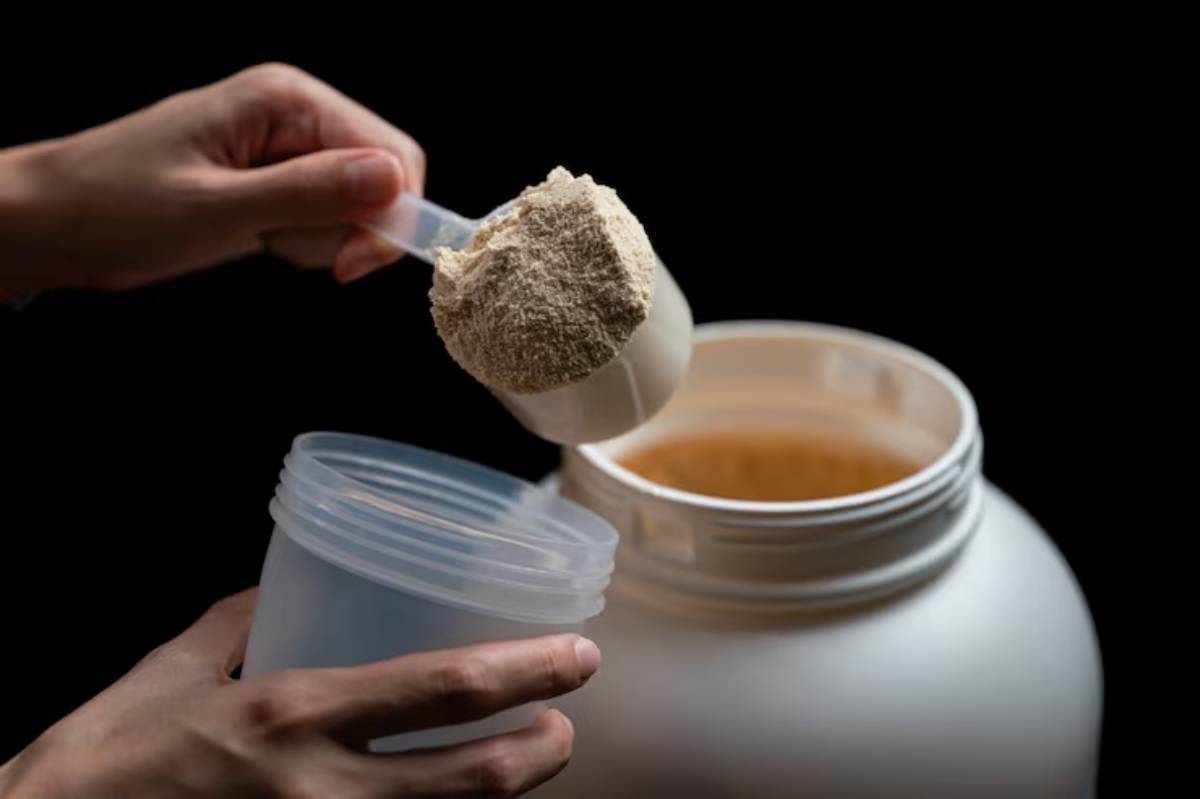
Whey vs Casein: Which Builds Muscle Better?
You’ve just smashed a heavy leg day, and you’re staring at your kitchen cupboard, protein tub in hand. But wait—should you reach for whey or casein? If you’ve ever found yourself paralysed by this choice, you’re not alone. The battle of whey vs casein protein is a well-worn debate in the fitness world, and the stakes are high. Choosing the best protein for gains can make a real difference in your muscle-building results.
Whether you’re a gym newbie looking to bulk up or a seasoned lifter trying to maximise your supplement stack, understanding the difference between these two protein types can unlock better recovery, enhanced growth, and smarter nutrition. In this guide, we’ll dive deep into what makes each protein tick, how they affect your body, and most importantly, which one is right for your fitness goals.
So, grab your shaker bottle and let’s break it down.
What Are Whey and Casein Proteins?
Understanding the Source
Both whey and casein come from milk, comprising around 20% and 80% of its protein content, respectively. When milk is processed to produce cheese, whey is the liquid by-product, while casein is the curd.
Key Differences at a Glance:
Whey: Fast-digesting, rich in leucine, ideal for post-workout recovery
Casein: Slow-digesting, forms a gel in the stomach, great for overnight muscle support
The Science Behind Muscle Growth
To understand which protein is better, it helps to grasp how muscle building works. Resistance training creates micro-tears in your muscle fibres. To repair and grow stronger, your body needs a supply of amino acids, particularly leucine, which acts as a trigger for muscle protein synthesis (MPS).
Here’s where timing and digestibility matter. Your muscles are like sponges post-workout—they’re primed to soak up nutrients fast. But during sleep, your body also undergoes muscle repair, which calls for a slow, steady nutrient supply.
Whey Protein: The Post-Workout Powerhouse
Fast Absorption for Fast Gains
Whey protein is quickly digested and absorbed, making it the go-to option immediately after workouts.
Benefits of Whey:
Rapid amino acid delivery: Ideal for the anabolic window right after training
High in BCAAs, especially leucine: Directly stimulates MPS
Versatile and tasty: Mixes easily with water or milk
Types of Whey Protein:
Whey Concentrate: Affordable, retains some fat and lactose
Whey Isolate: Higher protein content, lower in lactose
Whey Hydrolysate: Pre-digested, fastest absorption but more expensive
Practical Tip:

Take 25-30 grams of whey within 30 minutes after your workout for optimal results.
Looking to time your protein just right? Check out our article on The Role of Protein Timing in Muscle Growth.
Casein Protein: The Nighttime Nutrient
Slow and Steady Muscle Support
Unlike whey, casein digests slowly, forming a gel-like substance in your stomach. This slow release of amino acids makes it perfect for overnight muscle repair.
Benefits of Casein:
Prolonged amino acid release: Ideal before bedtime
Anti-catabolic: Helps prevent muscle breakdown over long fasting periods
Satiating: Keeps you fuller for longer
Best Time to Take Casein:
Before bed: For overnight recovery
During long fasting windows, Such as intermittent fasting protocols
Practical Tip:
Consume 25-40 grams of casein 30-60 minutes before sleep to fuel your recovery overnight.
Read more on slow-releasing options in Nighttime Protein Casein and Slow-Digesting Options.
Which Protein Builds More Muscle?
Head-to-Head Comparison
| Feature | Whey | Casein |
| Digestion Speed | Fast | Slow |
| Best Time to Use | Post-workout | Before bed |
| Leucine Content | High | Moderate |
| Satiety | Moderate | High |
| Ideal Use Case | Muscle building | Muscle preservation |
Research Roundup:
A 2012 study published in Nutrition & Metabolism found that whey protein stimulated greater MPS immediately post-workout compared to casein.
However, a 2009 study in the Journal of Strength and Conditioning Research indicated that casein is more effective at reducing muscle breakdown.
So, Which One Wins?
Neither. Both proteins play unique roles and complement each other when used correctly.
How to Incorporate Both in Your Routine
Sample Daily Protein Plan:
Morning: Whey with breakfast smoothie
Post-Workout: Whey isolate shake
Afternoon Snack: Protein-rich meal
Pre-Bed: Casein shake or Greek yoghurt
Tips for Combo Use:
Stacking: Use a blend of whey + casein for sustained release
Meal Timing: Pair whey with high-GI carbs post-workout; casein with fats before bed
Hydration: Protein requires adequate water for metabolism
Real-World Experience: What Lifters Say
John’s Journey
“I used to rely solely on whey, but I’d wake up sore. Once I added casein at night, I noticed better recovery and less next-day fatigue.”
Sarah’s Story
“Whey helps me hit that post-workout window, but casein keeps my cravings in check late at night. It’s a win-win for cutting.”
Expert Opinion:
Dr. Emily Rankin, PhD in Sports Nutrition
“Whey and casein are not competitors—they’re partners in your muscle-building journey. Timing and context matter more than choosing one over the other.”
Whey vs Casein for Specific Goals
Bulking:
Use both whey post-workout, casein before bed
High-calorie shakes with casein can increase intake without added hunger
Cutting:
Casein helps control hunger during deficits
Use whey sparingly to retain lean mass
Strength Training:

Focus on leucine-rich whey for performance
Use casein to maintain gains during recovery
Vegan or Dairy-Free?
Consider alternatives like pea protein or rice protein blends with similar absorption patterns
Myths and Misconceptions
- “Whey is always better.”
Not true. Casein excels at preventing muscle breakdown during long fasting periods. - “Casein is bad for digestion.”
Only if you’re lactose intolerant—choose casein isolate or hydrolysed forms. - “You need loads of protein to build muscle.”
Research supports 1.6–2.2g/kg of body weight as optimal for muscle growth.
Final Thoughts: Build Smarter, Not Harder
Choosing between whey vs casein protein isn’t about picking a winner—it’s about timing and strategy. Whey shines in the anabolic window, giving your muscles the quick hit of nutrients they need. Casein, on the other hand, is your silent partner during sleep, fuelling growth while you rest.
Incorporating both into your supplement plan allows you to maximise muscle protein synthesis while minimising breakdown. And that, ultimately, is the holy grail of muscle-building supplements.
So, next time you’re prepping your protein shake, ask yourself not “Which is better?” but rather “When do I need it most?”
Ready to Optimise Your Supplement Stack?
Got a favourite between whey and casein? Or use a mix of both? Share your experience in the comments! And if you’re hungry for more gains, explore our full guide on How to Create a Muscle Gain Supplement is to improve a sleep. Don’t forget to subscribe to our newsletter for science-backed supplement tips, workout hacks, and more!


